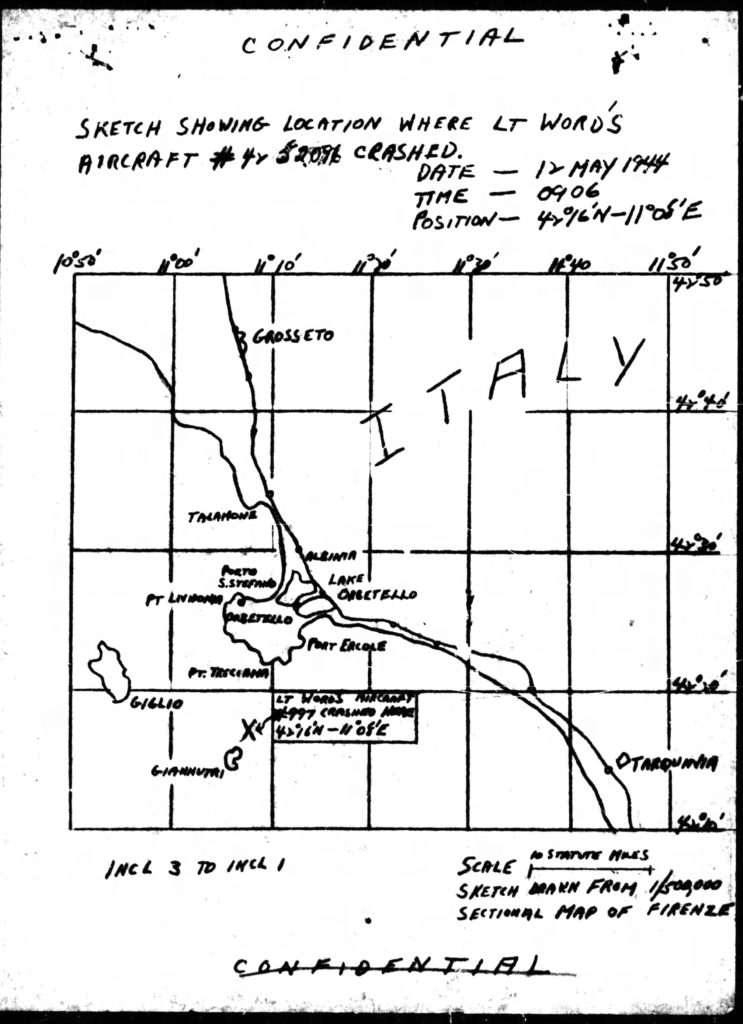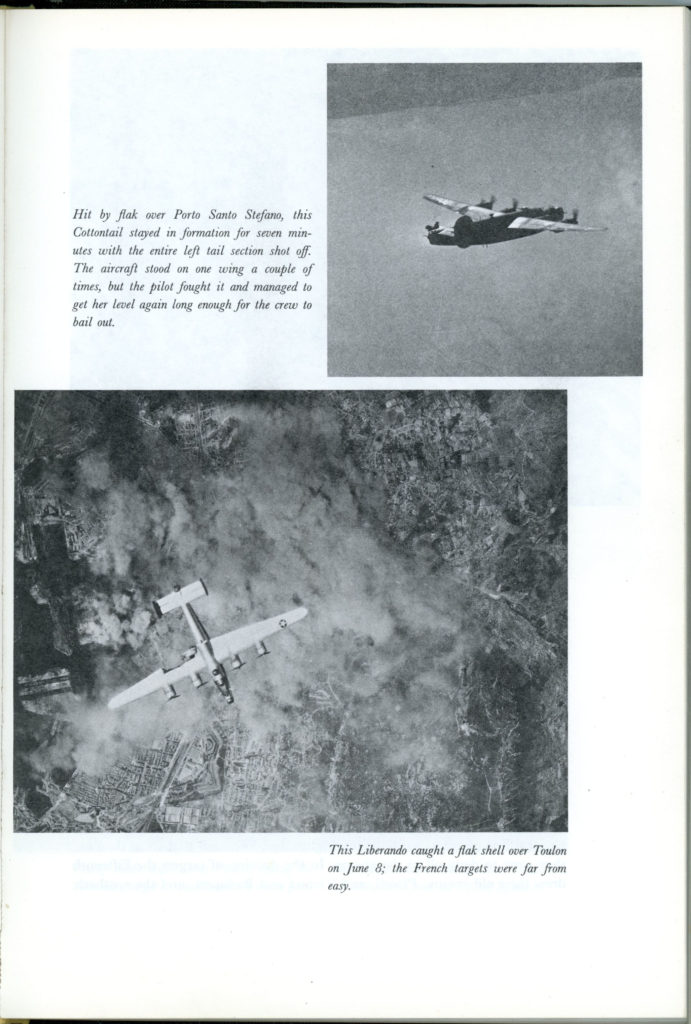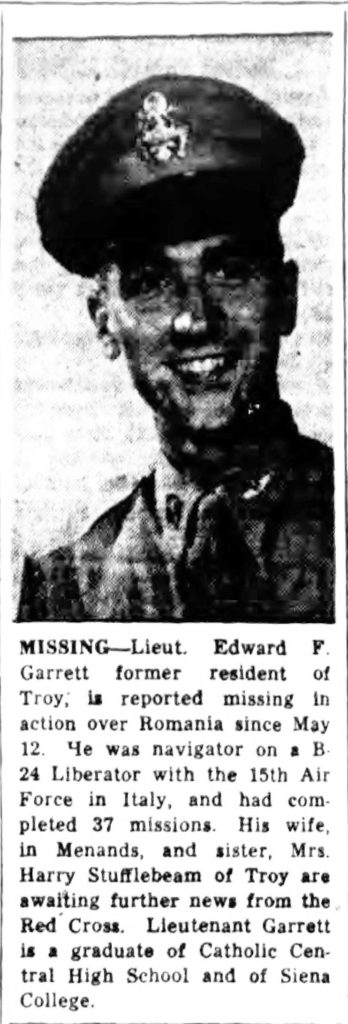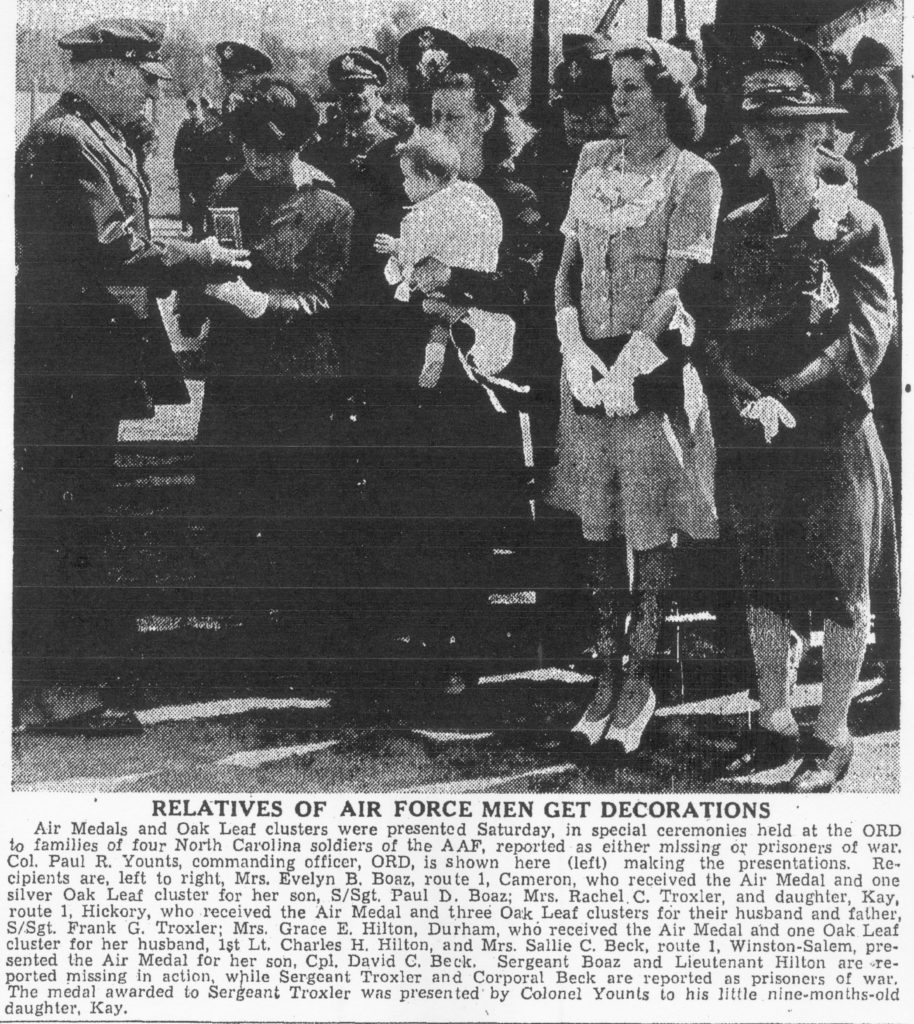This post presents the three images showing the loss of B-24H 42-52096: Marty the Rubble Maker.
MACR 4836 includes eyewitness statements about the loss of the aircraft by two members of the 722nd Bomb Squadron: 1 Lt. Willoughby J. Hodge and S/Sgt. Glenn K. Platt, the navigator and aerial gunner of B-24H 42-99805, “Madame Shoo Shoo”, Squadron Number 47 (otherwise known as “Termite Chaser II”). (1)
Platt’s account:
On 12 May 1944, our group was on a mission to bomb the Harbor Installations at Port San Stefano, Italy. I was flying as tail gunner in ship #805 in #4 position in the lead box in the lead attack unit. Lieutenant Word was flying ship #096, leading the low left element of the lead attack unit. Approximately two minutes after target time Lieutenant Word was hit by flak which knocked off his left rudder. This caused the ship to go partially out of control. The ship then went into a dive. One man bailed out while it was in the dive. As the ship approached the sea, Lieutenant Word pulled the ship out of the dive which gave sufficient time for the remainder of the crew to bail out. I observed a total of nine chutes before the ship nosed into the sea.
Hodge’s account:
On May 12, 1944, our group was on a mission to bomb the Harbor Installations at Port San Stefano, Italy. I was flying as navigator in ship #805 in #4 position in the lead box in the lead attack unit. Lieutenant Word was flying ship #096, leading the low left element of the lead attack unit. As we came off the bomb run, a burst of flak blew the left rudder completely off of Lieutenant Word’s ship. Lieutenant Word’s ship maintained level flight for about four minutes. It then started to climb, as it turned back towards the target. The ship then rolled almost completely over on its back. As the ship partially righted itself, it went into a steep turning dive. I then saw nine chutes leave the ship. It crashed into the sea at 0906 hours. The Coordinates were 42 16 N, 11 08 E.
____________________
Where was the plane lost?
Using the coordinates and the map within MACR 4836, GoogleMaps was used to generate maps – at successively larger scales – of area of the plane’s loss. These are presented below.
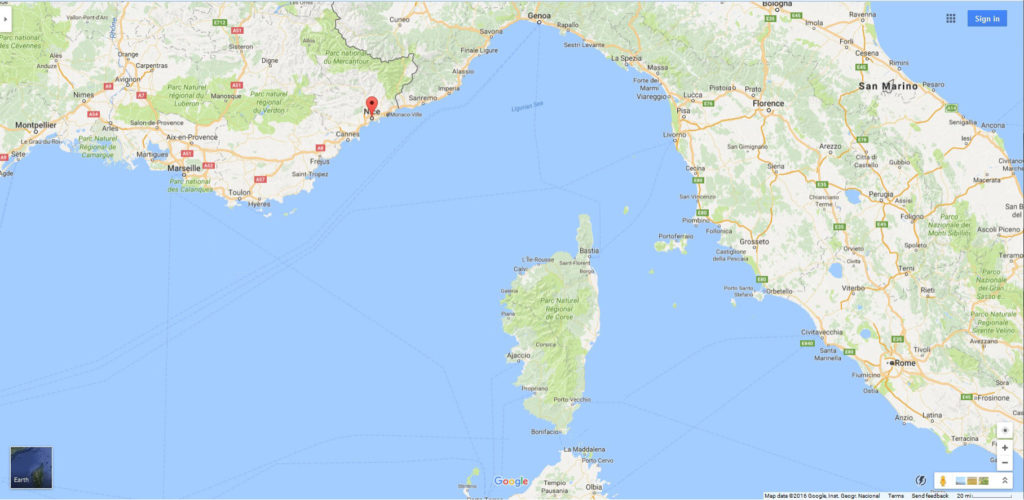 Western Italian coast, Tyrrhenian Sea, and Corsica. Porto Santo Stefano is directly east from Corsica.
Western Italian coast, Tyrrhenian Sea, and Corsica. Porto Santo Stefano is directly east from Corsica.
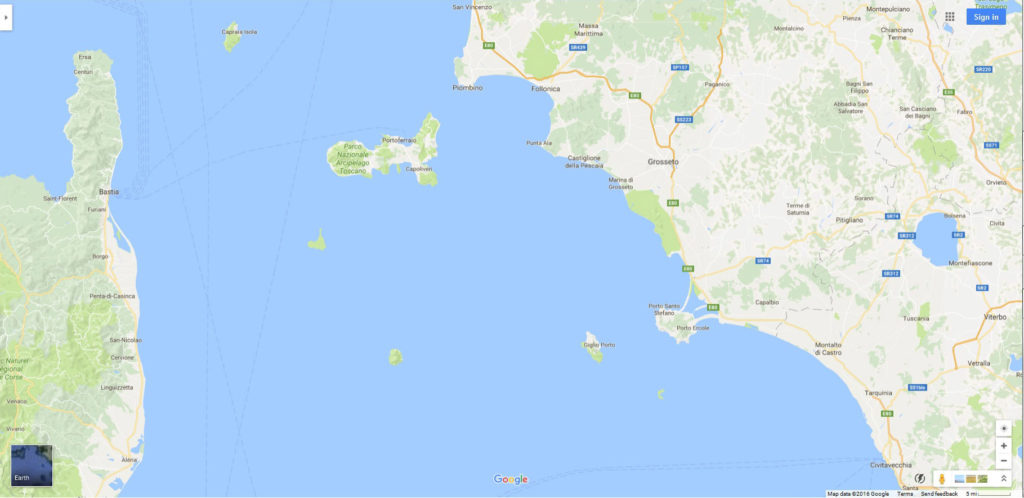 Zooming into the Tyrrhenian Sea, between Corsica and Porto Santo Stefano.
Zooming into the Tyrrhenian Sea, between Corsica and Porto Santo Stefano.
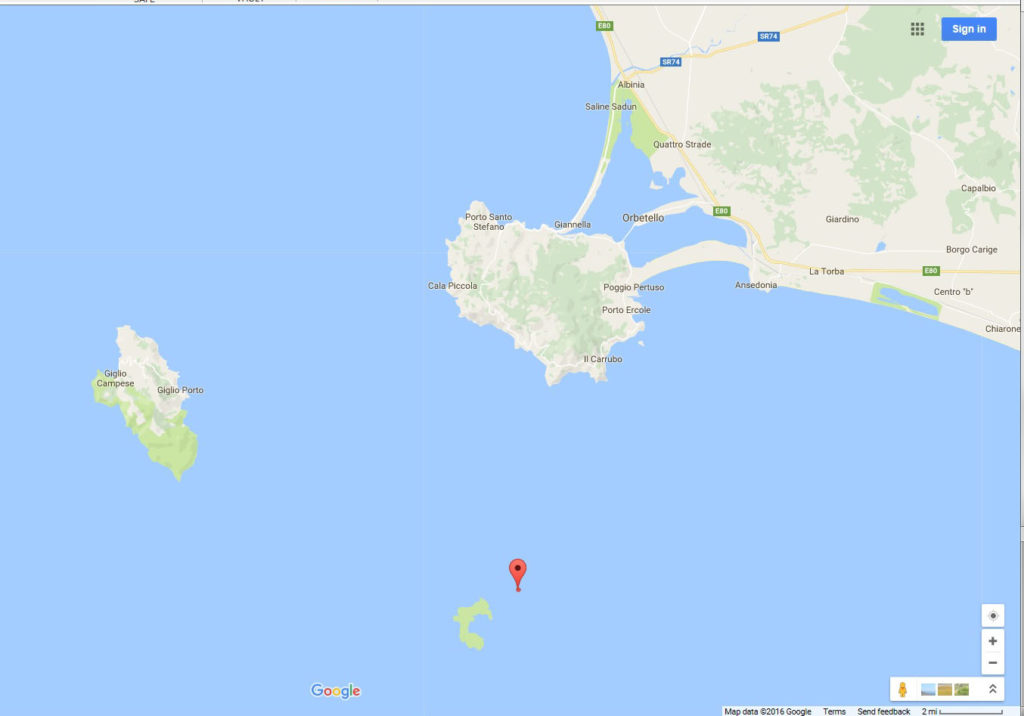 Porto Santo Stefano, with Giglio Island to the West, and Giannutri Island (unlabeled) to the south. Google Maps’ red position locator shows the loss location of Marty the Rubble Maker, based on coordinates of 42 16 N, 11 08 E reported by Lt. Hodge, and, shown in the map below, from MACR 4836.
Porto Santo Stefano, with Giglio Island to the West, and Giannutri Island (unlabeled) to the south. Google Maps’ red position locator shows the loss location of Marty the Rubble Maker, based on coordinates of 42 16 N, 11 08 E reported by Lt. Hodge, and, shown in the map below, from MACR 4836.
The photographs?
A review of photographs in the U.S. Air Force Pre-1954 Official Still Photography Collection at the United States National Archives reveals three images of the loss of Marty the Rubble Maker, which are also shown at the 450th BG Website. The original photographic prints are contained in “Box 100” of the World War II series in this photo collection.
The pictures are listed and described below. The “original” USAAF photographic print number is given first, followed by the the corresponding NASM (National Air and Space Museum) Videodisc Frame Number (the “3A” prefix).
62062AC / 3A-24479 – This image shows the B-24 in horizontal flight, seen from starboard rear, with the Italian coast in the distance. This is the image published in Log of the Liberators.
62063AC / 3A-24480 – This image shows the aircraft “standing” on its starboard wing and banking past vertical, before its recovery by Lieutenants Word and Bertling. Visually, the plane is “framed” between the port tail of a nearby Liberator, while to the right is Satan’s Gal, B-24G 42-78231, squadron number 5, of the 720th Bomb Squadron. A nice image of Satan’s Gal appears at the website of the American Air Museum, and another photograph – showing the aircraft in the 450th BG’s late-war “tiger-stripe” yellow and black tail markings – from the World War Photos gallery, appears below.
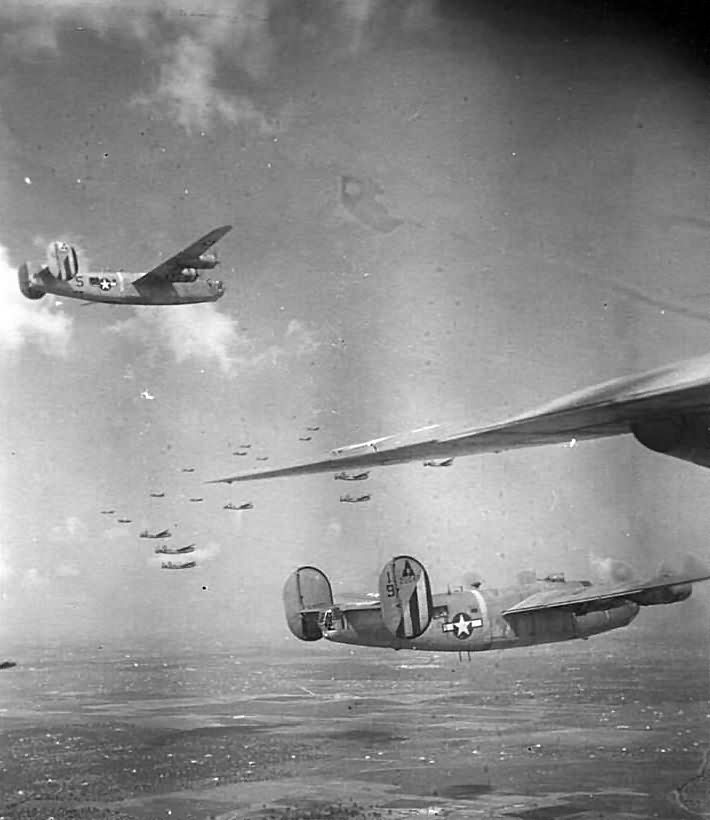 62064AC / 3A-24482 – This image shows the aircraft in a steep dive, flanked by the wing and tail of B-24s heading west, with the Italian coastline – southwest of Porto San Stefano – in the background. This is the image that appears in Fifteenth Air Force Story.
62064AC / 3A-24482 – This image shows the aircraft in a steep dive, flanked by the wing and tail of B-24s heading west, with the Italian coastline – southwest of Porto San Stefano – in the background. This is the image that appears in Fifteenth Air Force Story.
The three photographs were probably taken in the sequence listed above (62AC, then 63AC, then 64AC), which is consistent with the accounts given by Platt and Willoughby.
____________________
The photographs, in sequence…
The three photographs are presented below. The first and last images include GoogleEarth 3-D virtual views best conforming to the location and perspective of the photograph, and, a Google Map matching the locality of that 3-D virtual view. (The “second” image of the sequence – 62063AC / 3A-24480 – does not include Google Map or 3-D virtual views.)
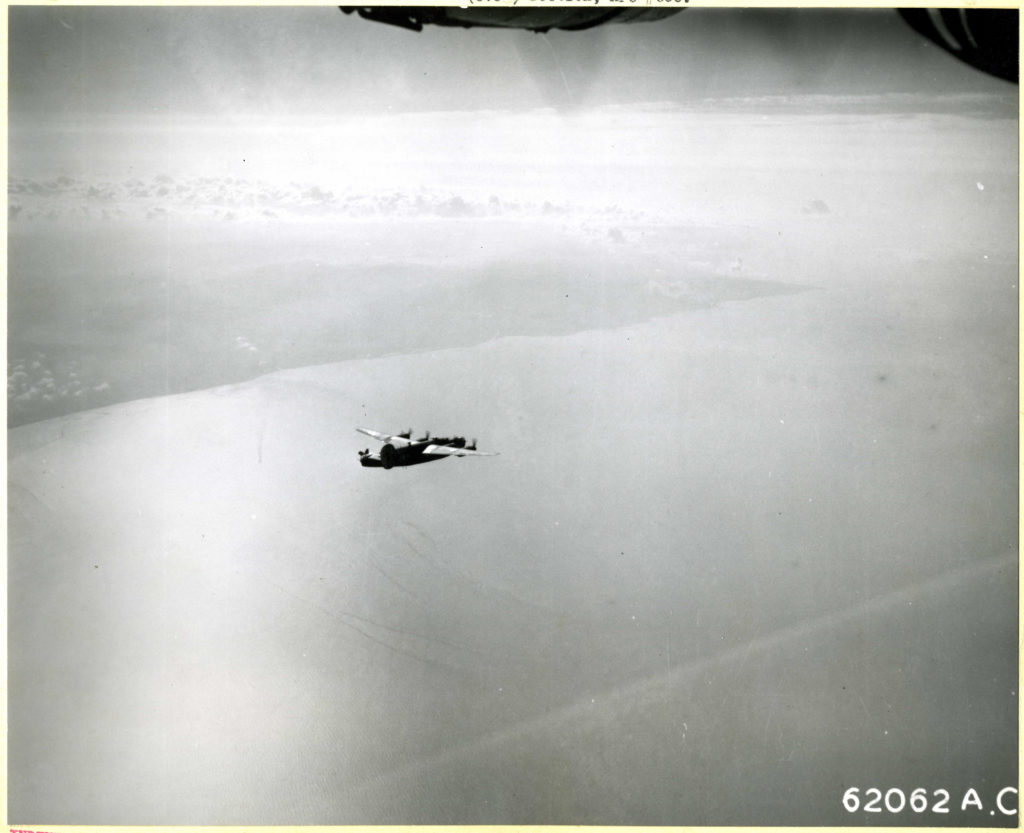 62062AC / 3A-24479 – Precisely because of the clarity of this photograph, with the aircraft silhouetted against the sea, and the coast of Italy not far off in the distance – but alas, still too far – this is the most evocative and haunting of the three photographs.
62062AC / 3A-24479 – Precisely because of the clarity of this photograph, with the aircraft silhouetted against the sea, and the coast of Italy not far off in the distance – but alas, still too far – this is the most evocative and haunting of the three photographs.
It evokes two words, “If only…”
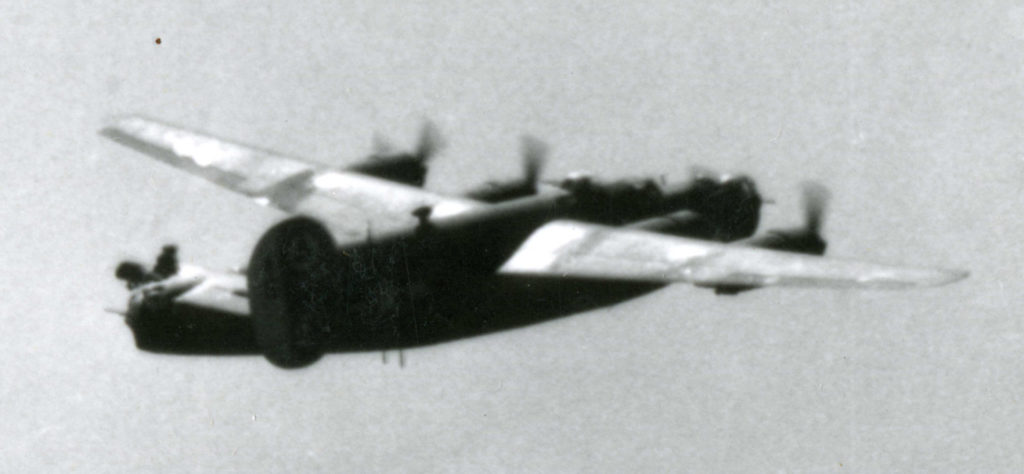 This is a 2400 dpi enlargement from the original NARA photographic print, enhanced to bring out details. All four engines are undamaged, while the ball turret, with its guns pointed downward, has probably been vacated. The almost completely missing port tail is strikingly evident, suggesting that the flak burst exploded very close to S/Sgt. Whitley’s tail turret. Though probably not visible in your web browser, the aircraft has a two digit tail number, which appears to be 45 or 46.
This is a 2400 dpi enlargement from the original NARA photographic print, enhanced to bring out details. All four engines are undamaged, while the ball turret, with its guns pointed downward, has probably been vacated. The almost completely missing port tail is strikingly evident, suggesting that the flak burst exploded very close to S/Sgt. Whitley’s tail turret. Though probably not visible in your web browser, the aircraft has a two digit tail number, which appears to be 45 or 46.
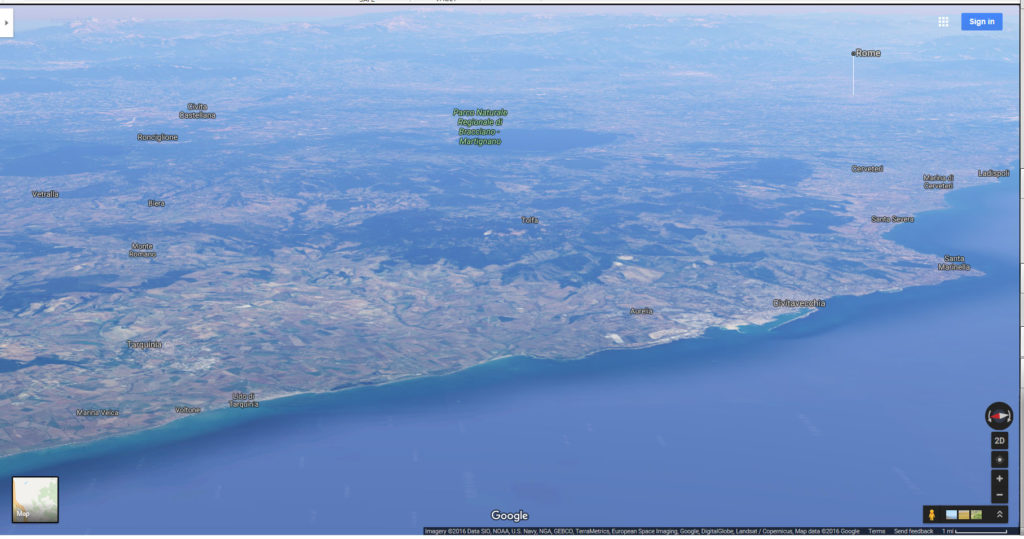 Due to the subtlety of the coastline, atmospheric haze, and the angle of view, generating a 3-D view matching this image was challenging. However, this 3-D view of the coast of Italy appears to be the “best fit” for the geographic features seen in the above photo. This section of the Italian coastline encompasses a view of Tarquinia, Civitavecchia, and Santa Marinella.
Due to the subtlety of the coastline, atmospheric haze, and the angle of view, generating a 3-D view matching this image was challenging. However, this 3-D view of the coast of Italy appears to be the “best fit” for the geographic features seen in the above photo. This section of the Italian coastline encompasses a view of Tarquinia, Civitavecchia, and Santa Marinella.
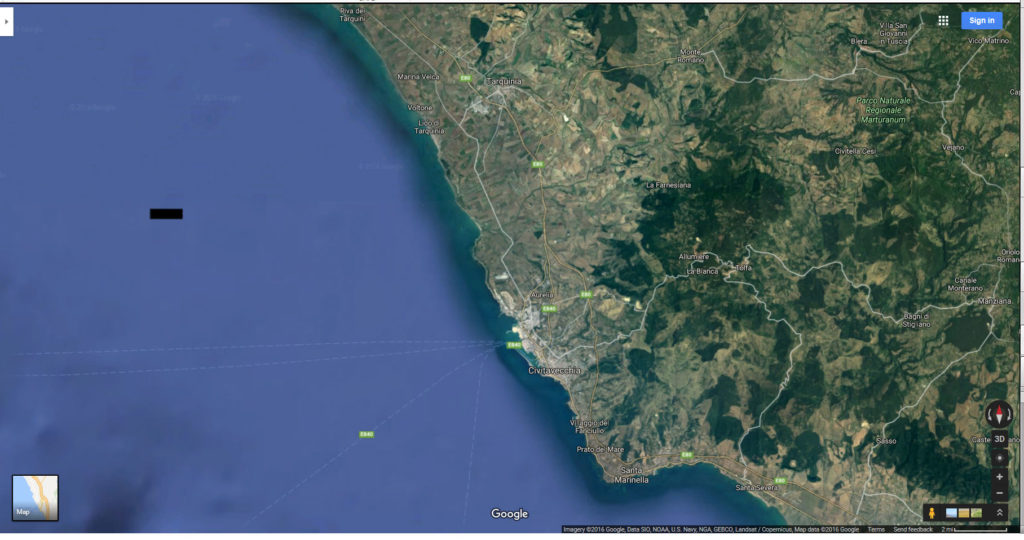 A vertical view of the same area.
A vertical view of the same area.
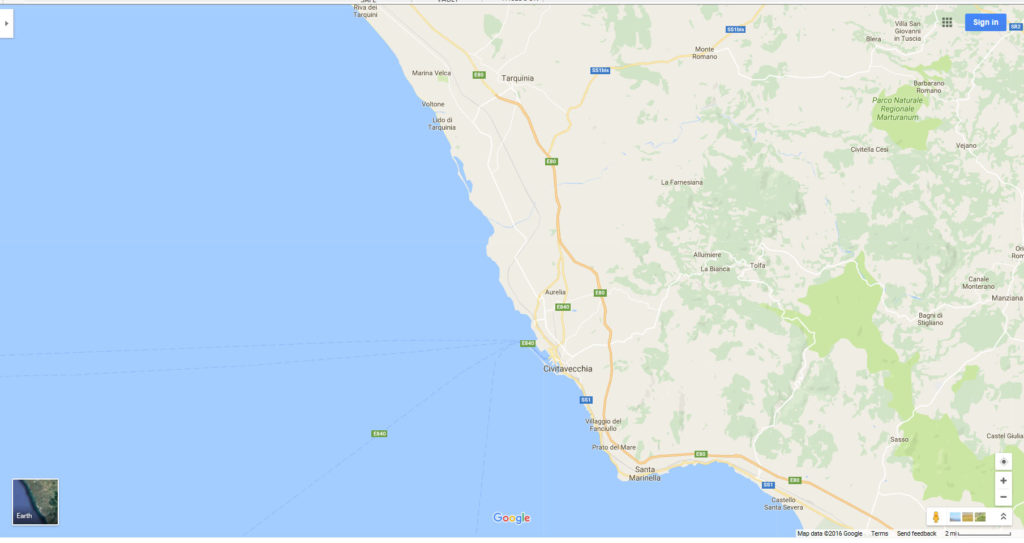 A map view of Tarquinia, Civitavecchia, and Santa Marinella.
A map view of Tarquinia, Civitavecchia, and Santa Marinella.
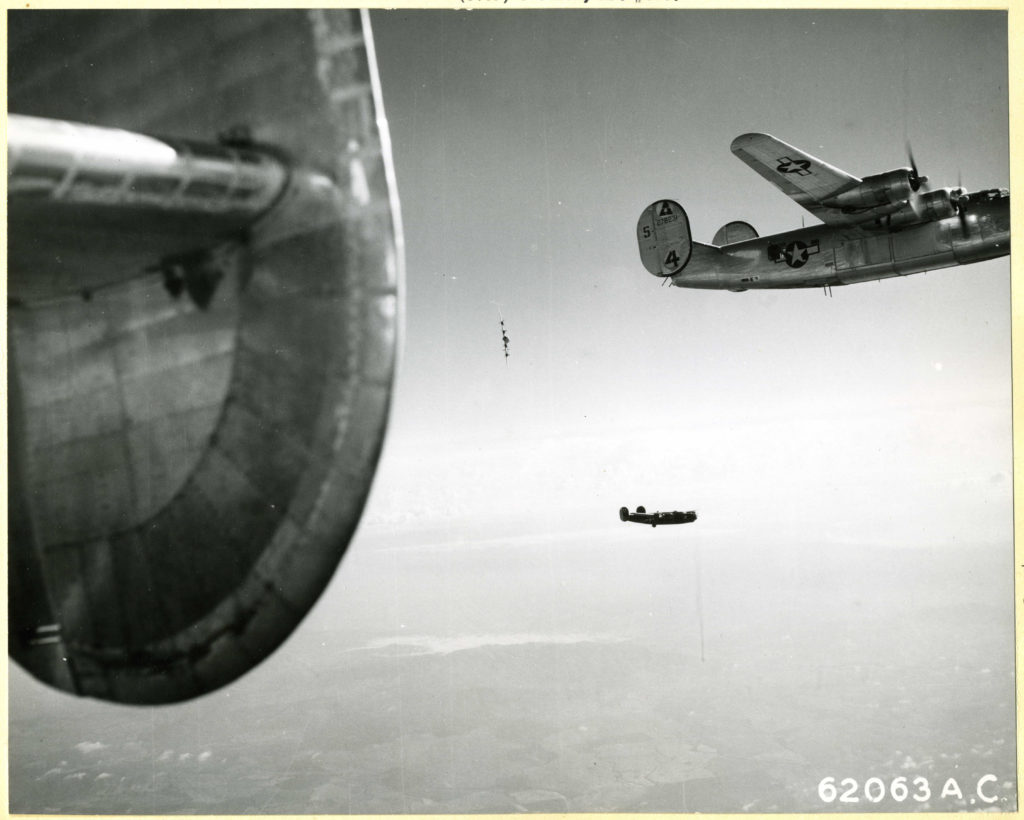 62063AC / 3A-24480 – This image is testimony to the flying skill of Lieutenants Word and Bertling. The plane has banked well past vertical, and yet they still made a recovery…
62063AC / 3A-24480 – This image is testimony to the flying skill of Lieutenants Word and Bertling. The plane has banked well past vertical, and yet they still made a recovery…
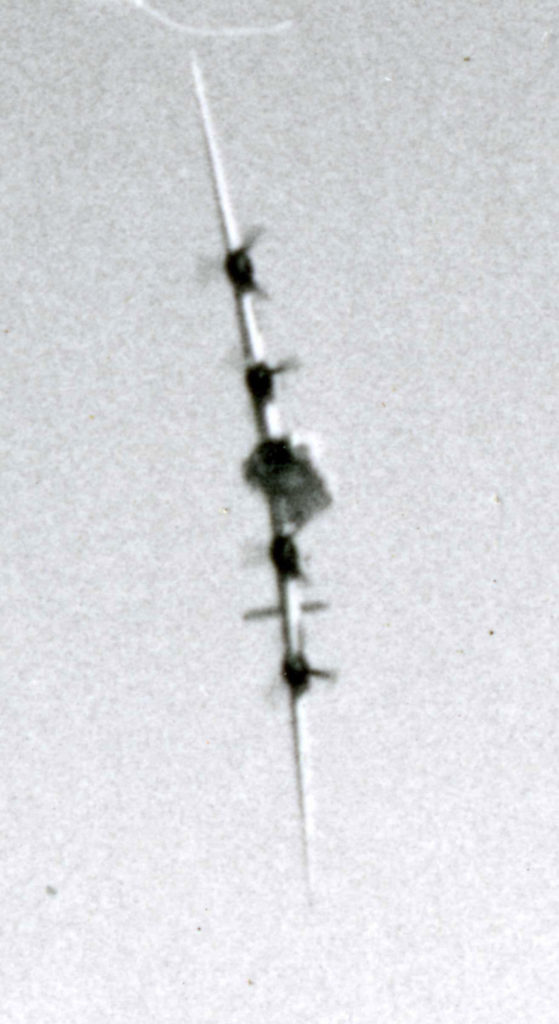 This image is a 3200 dpi enlargement from 3A-24480. No new details have emerged, but the picture does stand out more clearly.
This image is a 3200 dpi enlargement from 3A-24480. No new details have emerged, but the picture does stand out more clearly.
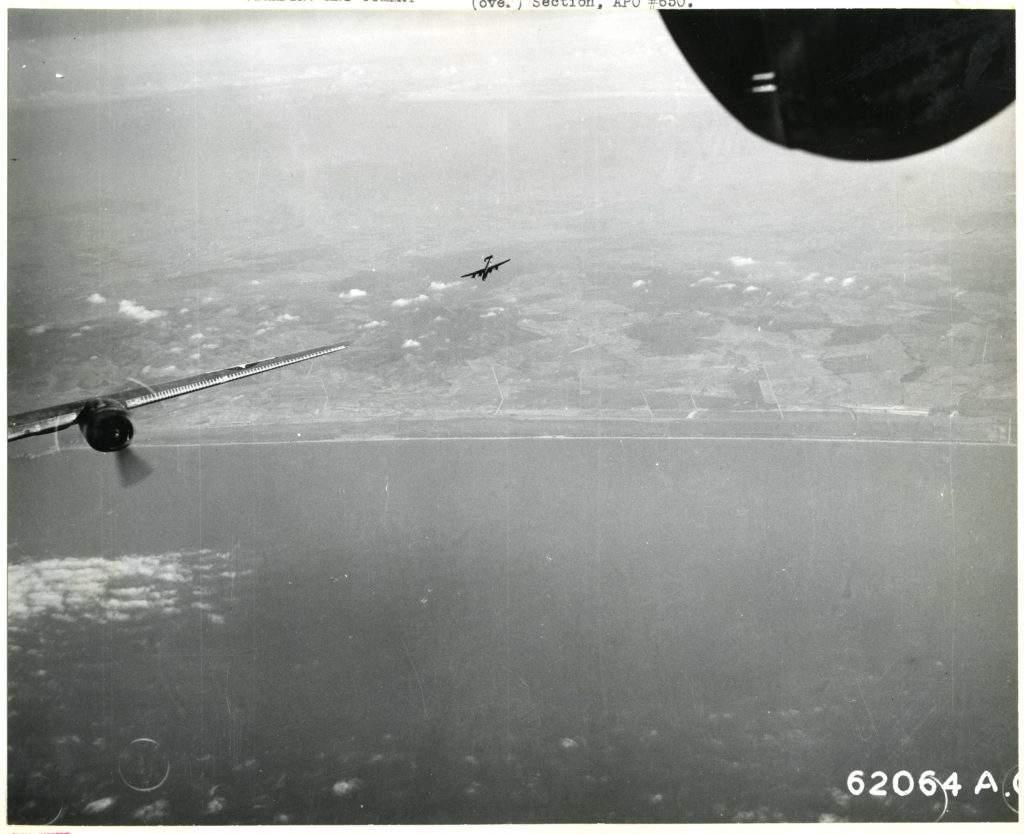 62064AC / 3A-24482 – The last of the three pictures, with the diving Liberator silhouetted against the western coast of Italy. In Lt. Hodge’s words, “It then started to climb, as it turned back towards the target. The ship then rolled almost completely over on its back. As the ship partially righted itself, it went into a steep turning dive.” This photograph was probably taken just at that moment.
62064AC / 3A-24482 – The last of the three pictures, with the diving Liberator silhouetted against the western coast of Italy. In Lt. Hodge’s words, “It then started to climb, as it turned back towards the target. The ship then rolled almost completely over on its back. As the ship partially righted itself, it went into a steep turning dive.” This photograph was probably taken just at that moment.
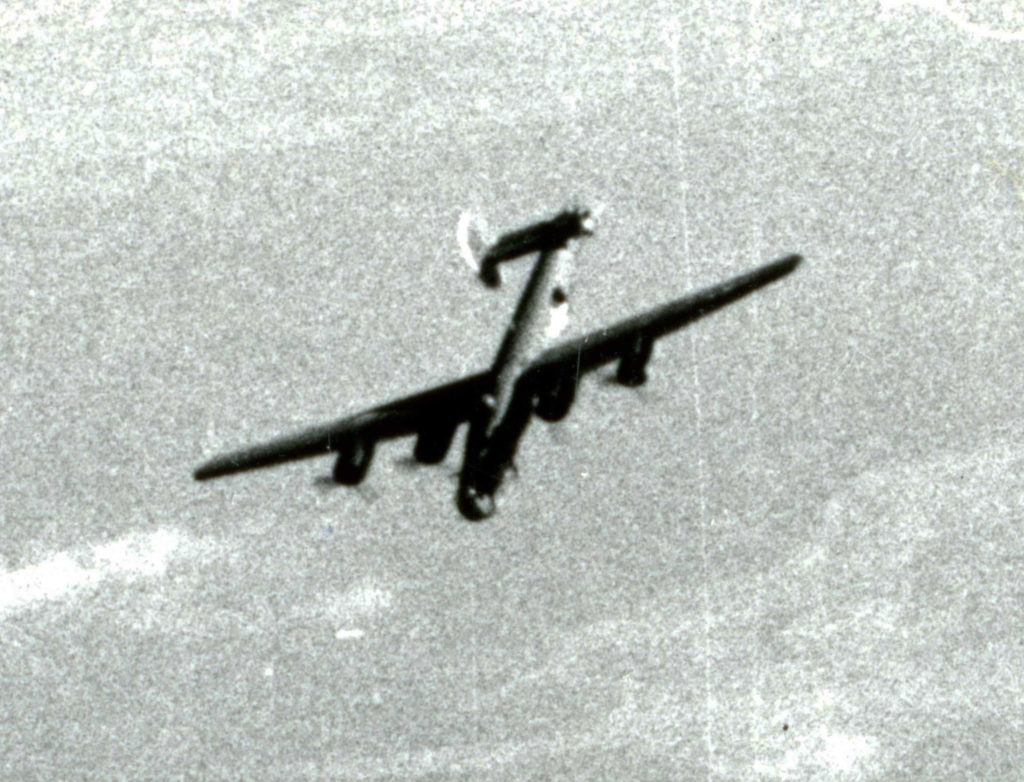 A 3200 dpi enlargement from the above image. Obvious is just how closely to the tail position the anti-aircraft shell exploded; virtually nothing remains of the port empennage. It appears – from the bright glint of sunlight off the starboard fin – that the plane’s de-icer boots have been removed, similar to the wing of the Liberator in the left side of the photograph.
A 3200 dpi enlargement from the above image. Obvious is just how closely to the tail position the anti-aircraft shell exploded; virtually nothing remains of the port empennage. It appears – from the bright glint of sunlight off the starboard fin – that the plane’s de-icer boots have been removed, similar to the wing of the Liberator in the left side of the photograph.
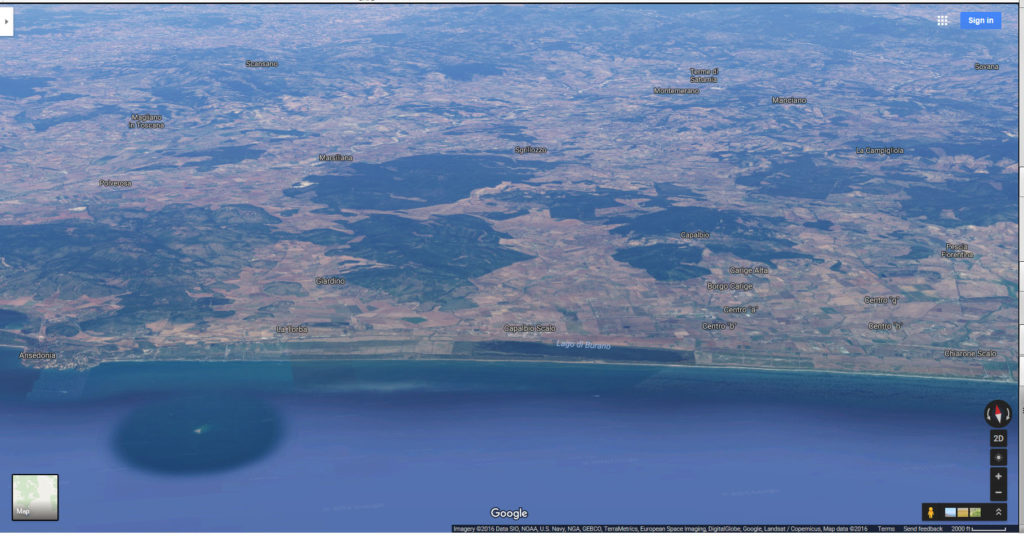 A 3-D view of the coast and nearby area in 62064AC / 3A-24482. The geographic features in the image (coastline, roads, farmland, forested areas, and a lake paralleling the coastline) are identical to those visible in the photograph. In the original image, Marty the Rubble Maker is visually superimposed against forested area just to the left (northwest) of Sgrillozzo. The image shows the Italian coastline with Spacco della Regina to the northwest, Capabio Scalo in the center, and Lago di Burano just inland from shore.
A 3-D view of the coast and nearby area in 62064AC / 3A-24482. The geographic features in the image (coastline, roads, farmland, forested areas, and a lake paralleling the coastline) are identical to those visible in the photograph. In the original image, Marty the Rubble Maker is visually superimposed against forested area just to the left (northwest) of Sgrillozzo. The image shows the Italian coastline with Spacco della Regina to the northwest, Capabio Scalo in the center, and Lago di Burano just inland from shore.
Assuming the accuracy of the location reported in the MACR, the crew parachuted over the Tyrrhenian Sea just over one mile northeast of the island of Giannutri. However, going by this image – alone – it appears that the crew parachuted and the aircraft crashed closer to the Italian mainland. This discrepancy may actually be due to the perspective from which the photograph was taken.
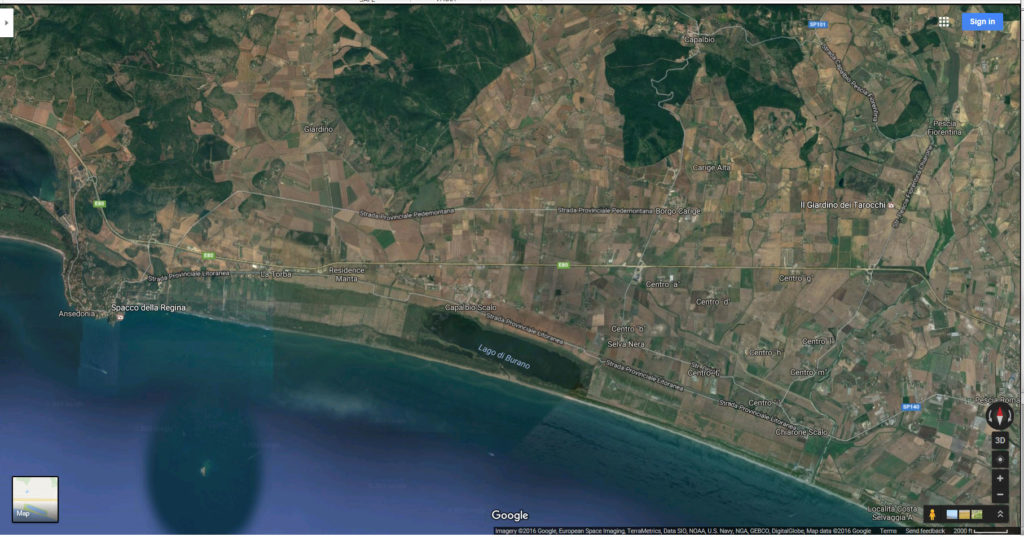 A vertical view of the area seen above.
A vertical view of the area seen above.
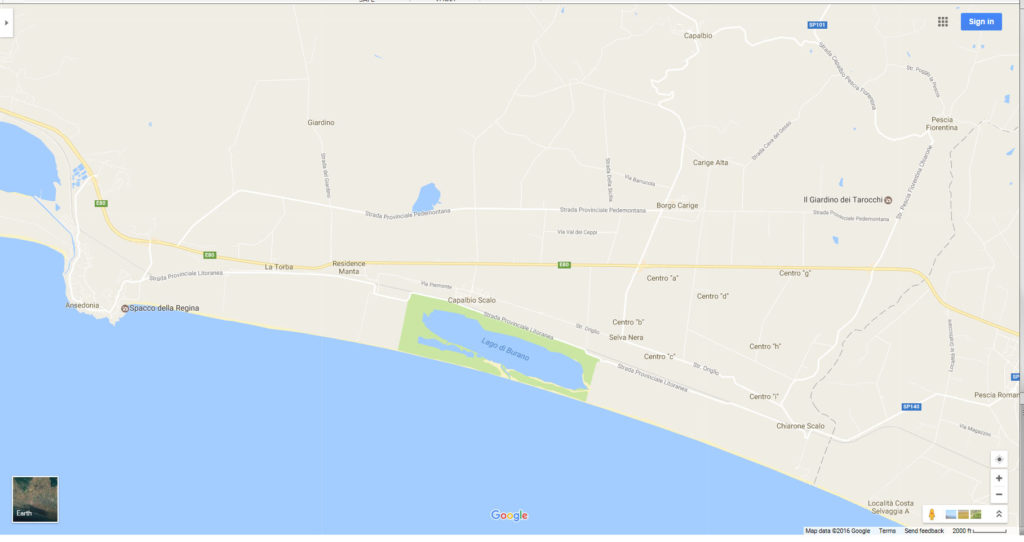 A map view of Spacco della Regina, Capabio Scalo in the center, and Lago di Burano.
A map view of Spacco della Regina, Capabio Scalo in the center, and Lago di Burano.
____________________
What happened?
Nine parachutes emerged from an aircraft carrying ten men.
None returned.
The tenth man? He could have been the tail gunner, S/Sgt, Whitley, perhaps mortally wounded or killed by anti-aircraft fire.
He could have been Lieutenant Word, who remained behind to give his crew a chance to escape.
The tenth man could – in actuality – have been any of the other eight men aboard the aircraft (except for Sgt. Beightol, whose body was eventually recovered and returned to the United States). (2)
Lt. Hodge’s account suggests that Lt. Word, realizing the predicament of his plane and crew, may have been attempting to reach the Italian mainland to allow a bail-out over land. They bailed out when the plane when out of control. They landed at sea, somewhere between the Italian mainland and Giannutri Island. They were almost certainly within sight of both as they descended in their parachutes.
A distance of about ten miles separates the western coast of Italy from Giannutri.
Ten miles is not far – “as the crow flies”.
Ten miles is a short distance – on a map.
But, a clearer impression of the nature of their situation can be seen in this remarkable photograph showing Giannutri Island, with Porto Santo Stefano and the Italian coastline in the distance. The image, from Bernard Lafond’s flickr Phostream was taken in 2009, and gives a striking impression of this section of the Tyrrhenian Sea and western Italian coast.
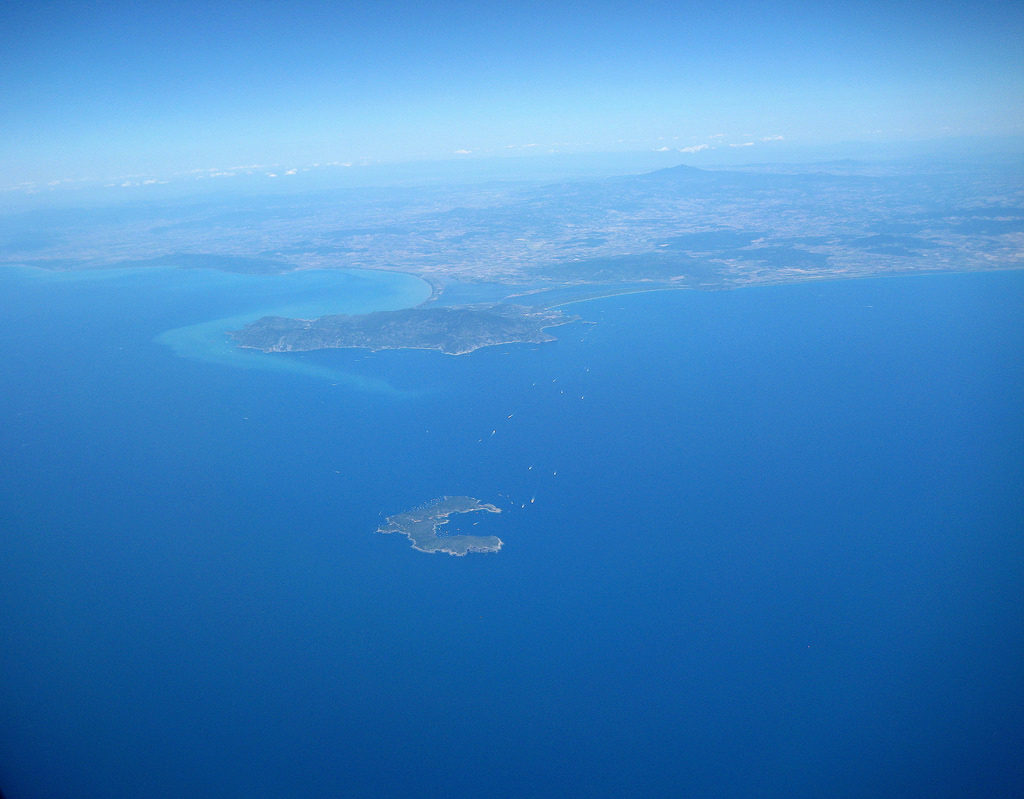 The crew parachuted close to land, but not close enough to land. Without immediate rescue, in water at a temperature of around 60 degrees, burdened by heavy flying equipment, with only a Mae West for flotation, ten miles of water might as well have been one hundred.
The crew parachuted close to land, but not close enough to land. Without immediate rescue, in water at a temperature of around 60 degrees, burdened by heavy flying equipment, with only a Mae West for flotation, ten miles of water might as well have been one hundred.
____________________
As Sergeant Beightol wrote five days before his final – and 50th – mission, “I haven’t done so much, but in a sense of the word I can say I have done a little something for my country. I hope to be able to do more. Perhaps I’ll get the chance.” It is more than ironic – but then again, life in general is often ironic – that he did far more than he could ever have imagined.
His name, and the name of his nine fellow crewmen, would become part of the total of over 407,300 American war dead of the Second World War, and would pass into history.
Perhaps the best we can do, in turn, is remember.
____________________
(1) A photo of Hodge, Platt, and their crew standing before the 450th BG B-24 Termite Chaser I can be found here. That aircraft was ditched in Naples Harbor by 2 Lt. Layman E. Shain (ironically, an original crewman of Marty the Rubble Maker) on May 19, Shain losing his life in that incident. Superb in-flight photos of “Madame Shoo Shoo” – from which they witnessed the loss of Marty the Rubble Maker – can be found at this 450th Bomb Group web page.
(2) More information about this can probably be found in his IDPF, which might clarify similar questions about Lt. Bertling.
